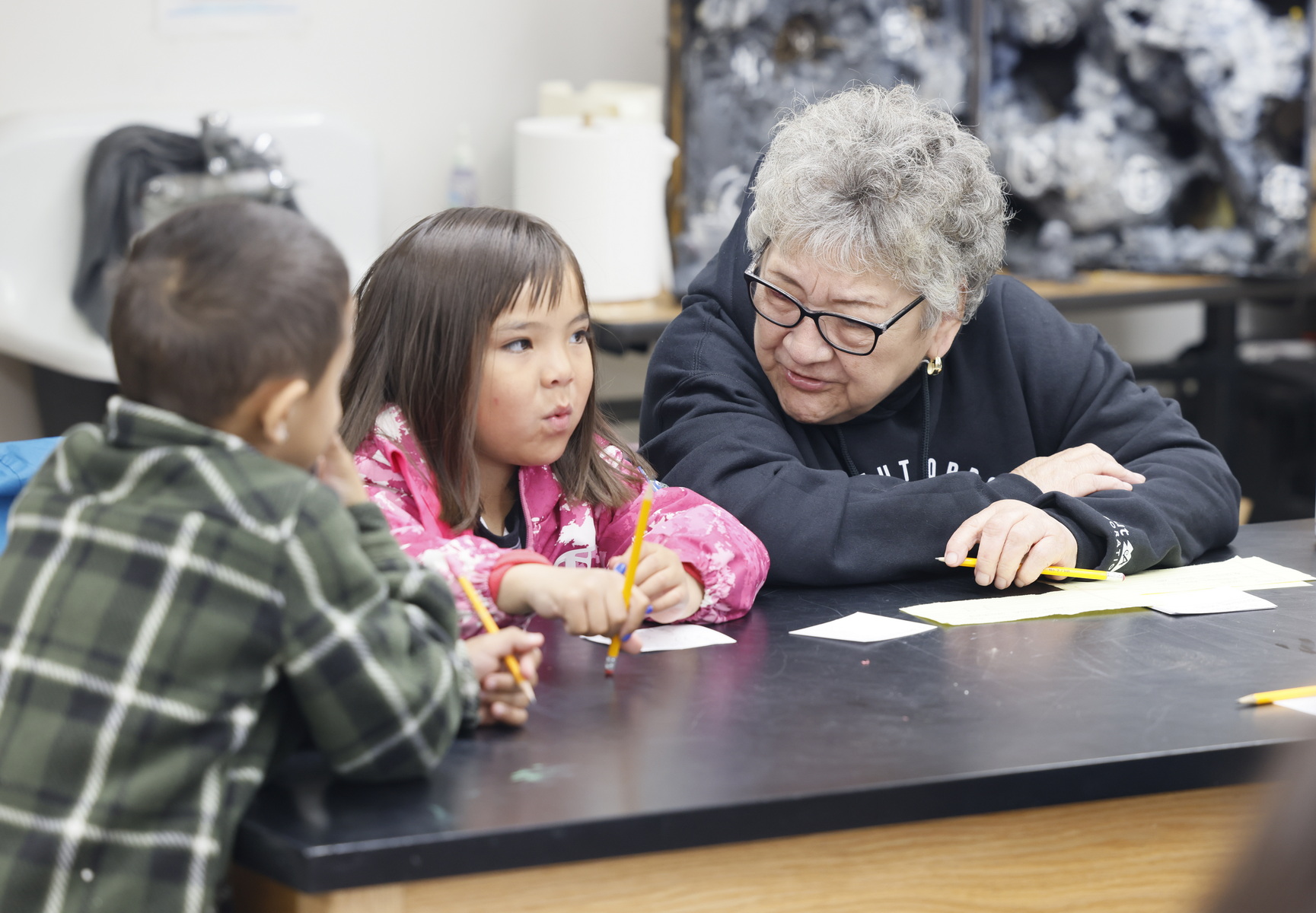After our warm-up activities of language learning and games, we set for a special field trip to Ridgewall seabird cliffs. We were joined by TDX Tour Guides Luis and Mariah, who taught us all about digiscoping, and Tucker from the U.S. Fish and Wildlife Service, who taught us about their research and monitoring on St. Paul and around Alaska. We also had a station for bird ID bingo and bird behavior bingo. The kids all had their own binoculars and proved effective at spotting species and behaviors.
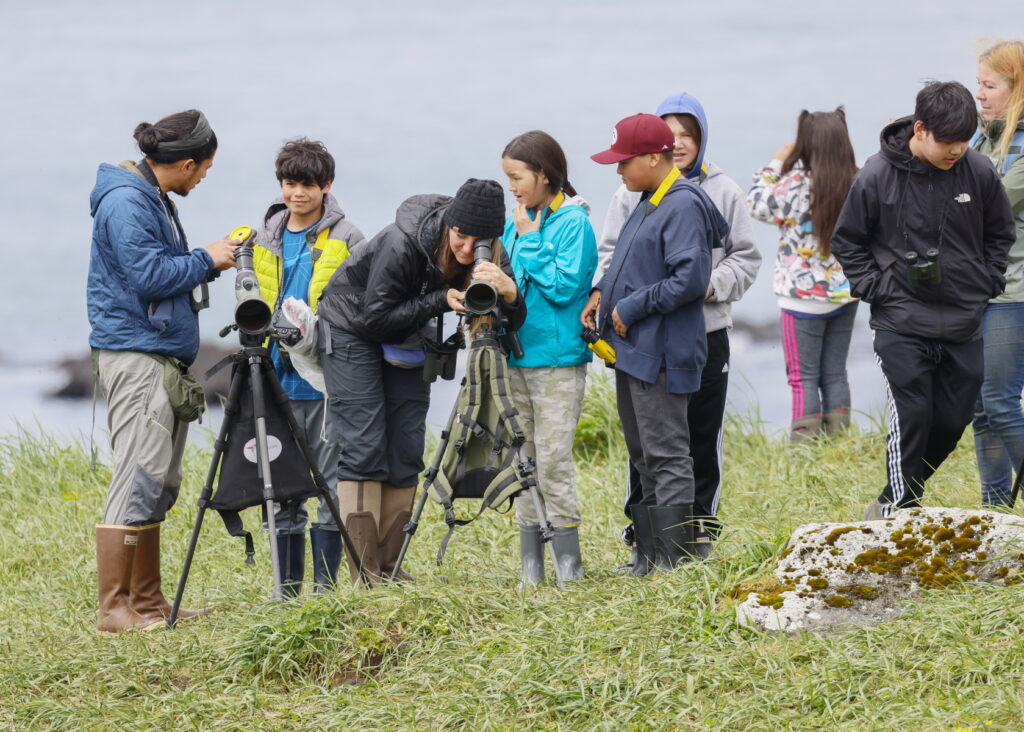
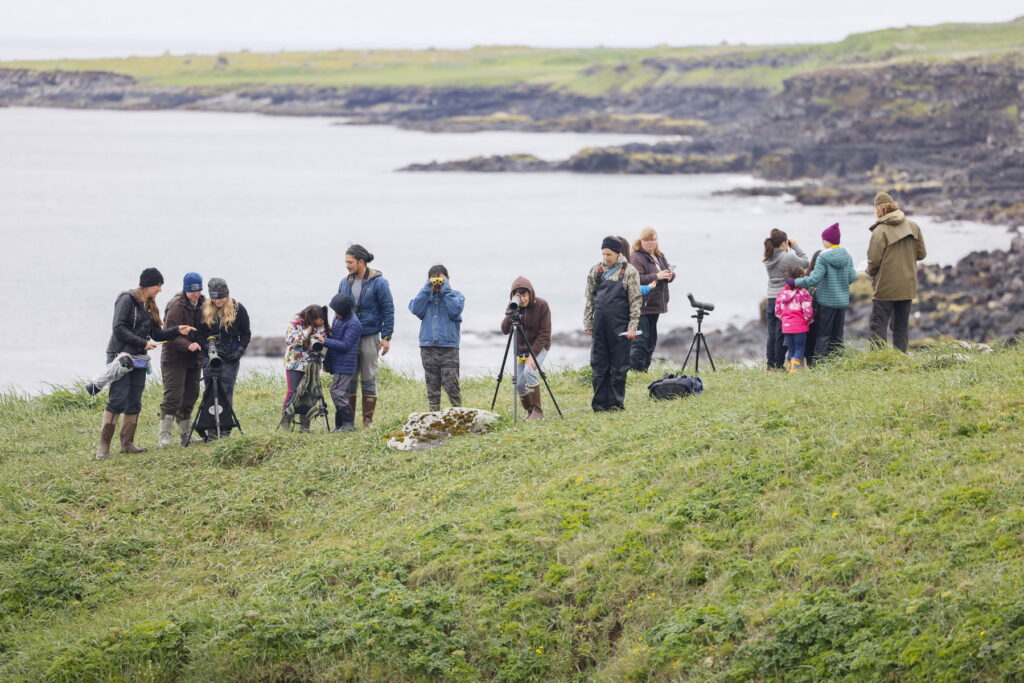
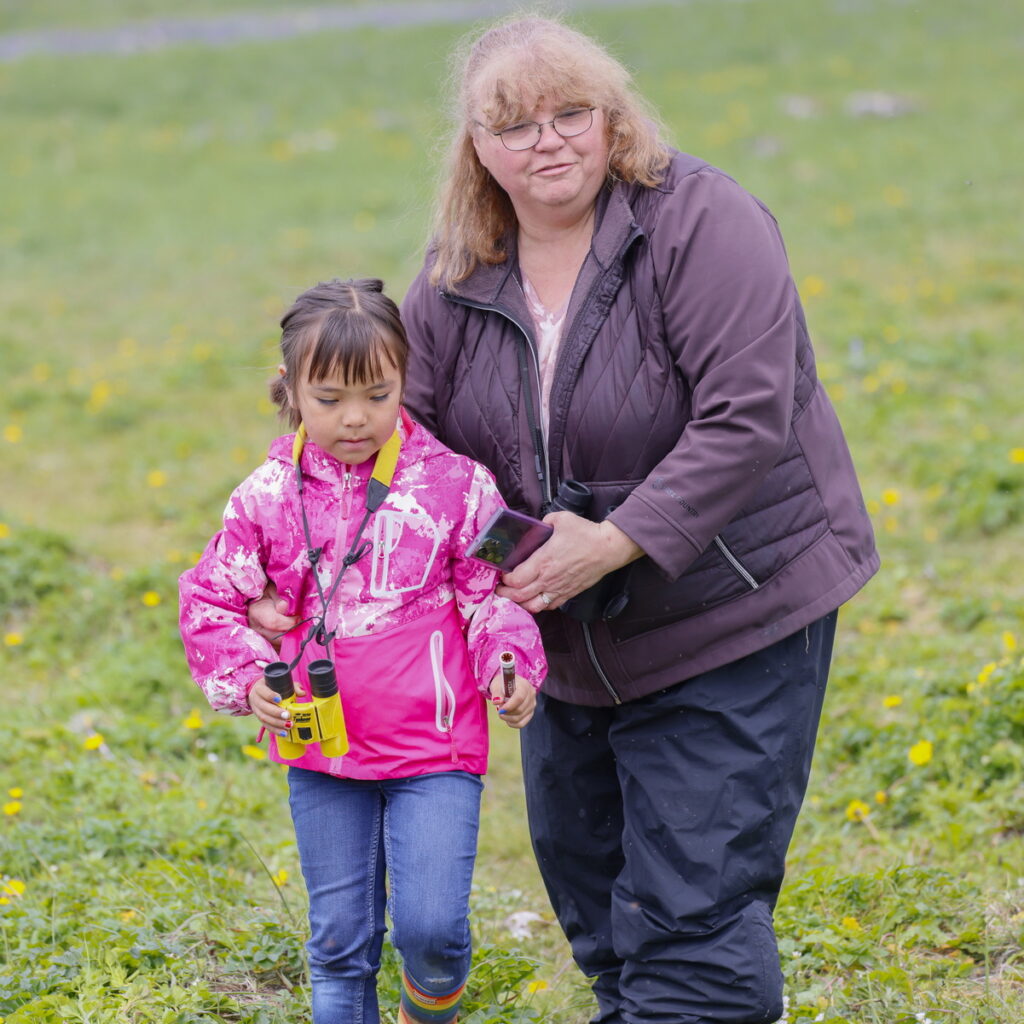
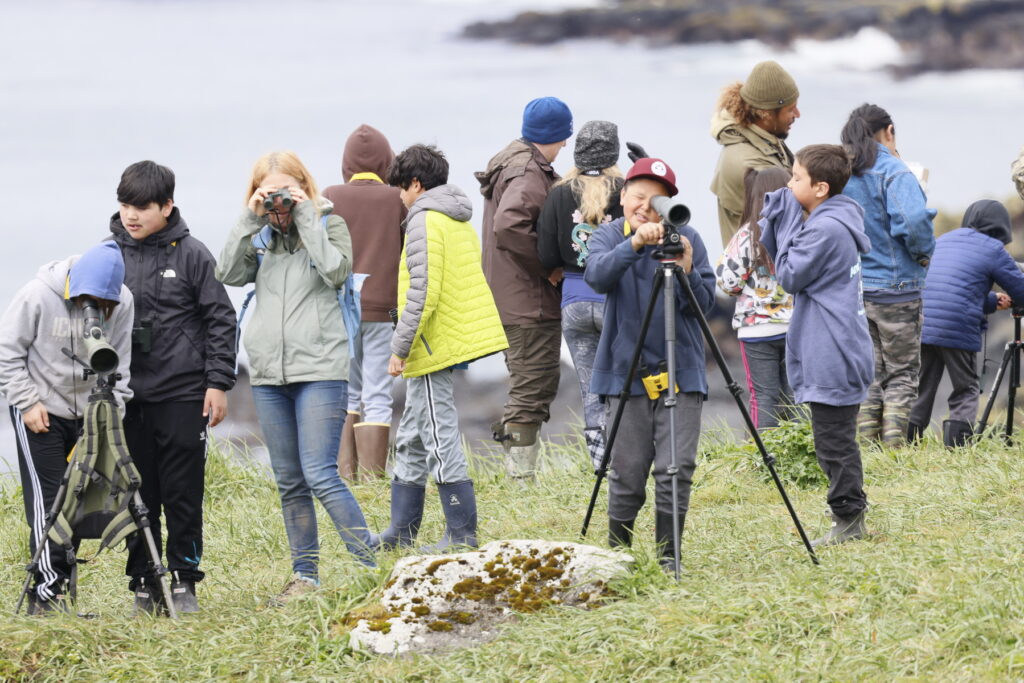
During today’s Grub Hub nest survey a lot of chicks hatched, but some eggs were lost—one crevice had a rat in it. We suspect, but don’t know for sure, that the rat ate the seabird egg.
Dr. Kristen Gorman from University of Alaska, Fairbanks (UAF) and Orlin Gologergen, a student at UAF, visited the classroom to teach us all about the amazing tracking devices they will be using for research on St. Paul. GPS satellite tracking devices give pinpoint accurate locations. Geolocators are accurate to only 100 km, but last up to two years. Orlin demonstrated seabird capture using a very long extension pole with a monofilament noose. After capturing a fake bird the students weighed and measure the bird using calipers, wing rule, and spring scales—all the tools of the trade. To finish up the session by having students run all around the school grounds and surrounding areas with the tagged bird. Tomorrow we will see how the accurately the GPS tag tracked their movements.
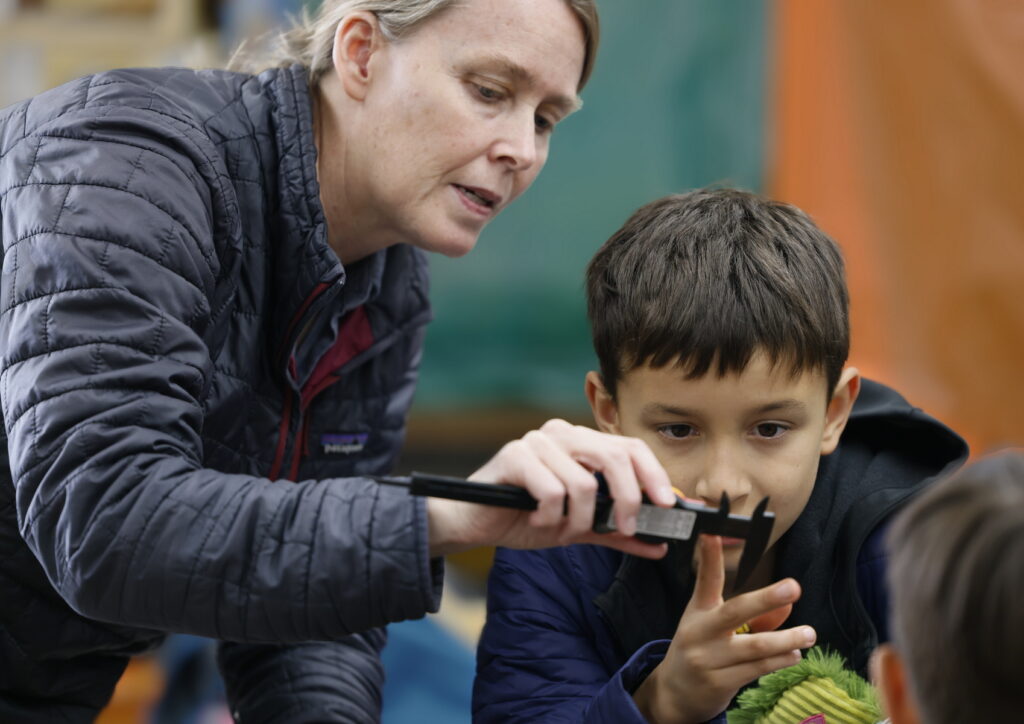
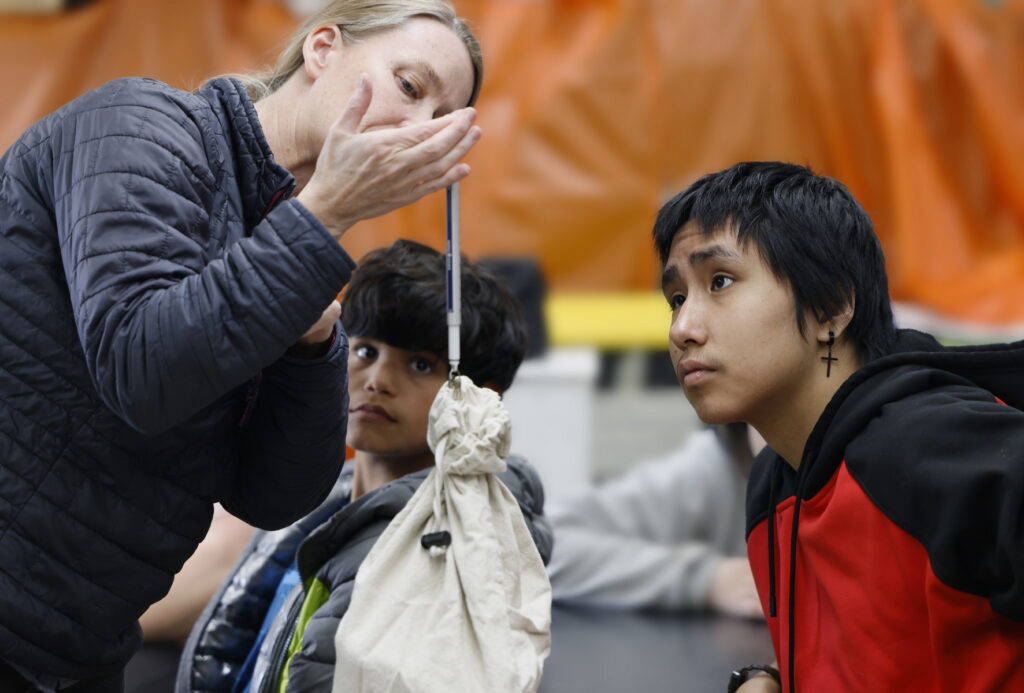
We finished up today’s session with craft time. Some students finished their paper mâché murre eggs, while others colored their pysansky eggs.
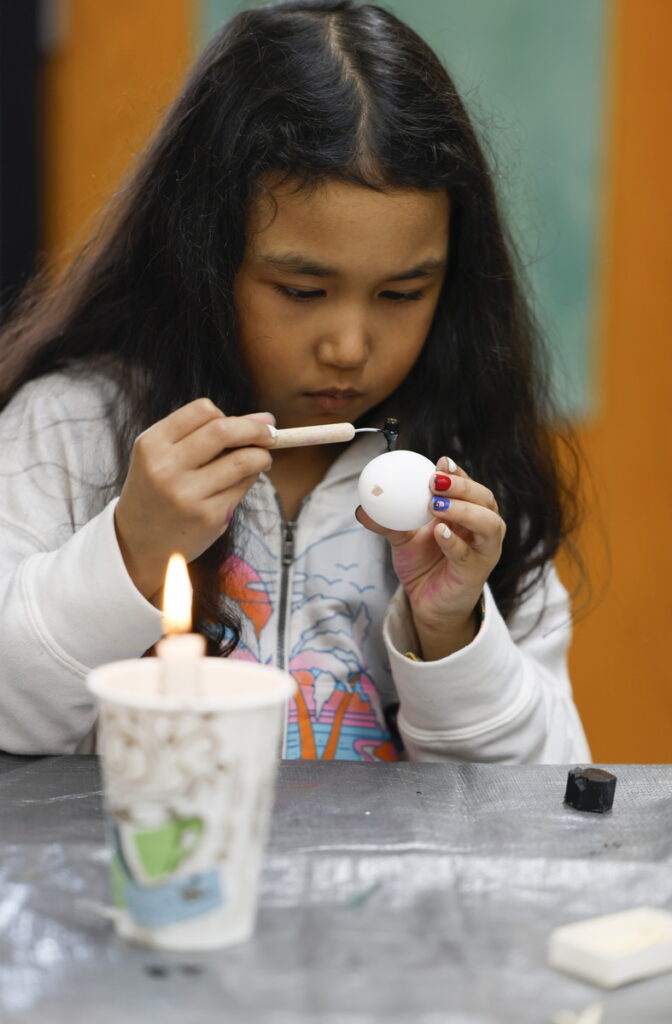
We were lucky to have so many special guests today!

